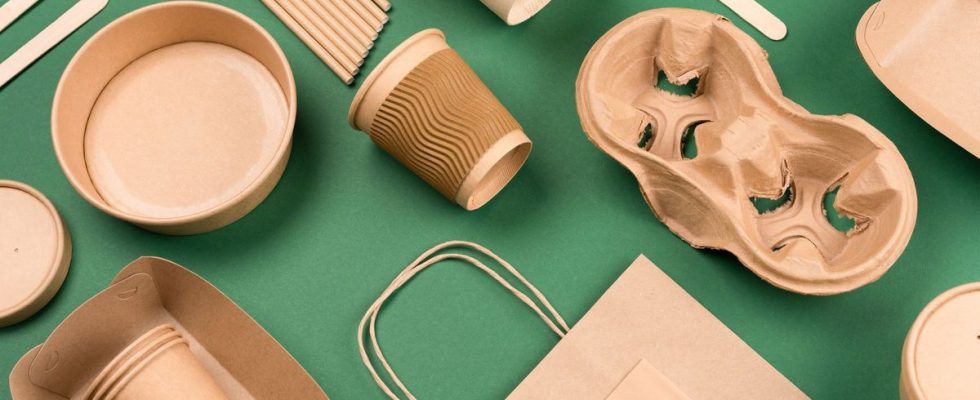Published on
Updated
Reading 2 mins.
While the international zero waste day, March 30, aims to promote more sustainable consumption patterns, a study dismantles the idea that glass is the material of choice for packaging meals in collective catering. Not only must the number of uses of a material be taken into account to indicate whether it is really acceptable from an environmental point of view, but it is also necessary to study its many impacts both in its manufacture and its use.
Often labeled as an eco-friendly material, glass cannot be said to be the ultimate material for packing meals. The choice of material for transporting chef’s dishes and other burgers cannot be reduced to a single option. Many parameters must be taken into account, starting with the number of uses for which a packaging is intended. This is precisely the subject of the study carried out by Foodles, a company catering company that has built its business around a concept of connected fridges in which fresh menus are delivered every day. . Carried out in partnership with the Greenly platform, which supports companies in measuring and reducing their carbon footprint, this project, touted as the first of the day, consisted of evaluating the life cycle of packaging used by collective catering.
While the end of single-use plastic packaging is expected by 2040, this comparative analysis offers restaurateurs food for thought to reduce the carbon footprint of delivery or take-out sales. The study measured the life cycles of three types of containers, namely the disposable, the glass deposit and the plastic deposit, according to their different impacts on the environment. Specifically, sixteen consequences induced by the manufacture and use of this packaging have been analysed, including ionizing radiation, the depletion of the ozone layer, the depletion of water resources, but also energy and mineral. If we are to believe the conclusion, glass can only be indicated as a high-performance ecological material if the material is used at least 400 times.
This is why the Foodles company decided to swap its glass containers for returnable packaging made of resin. More specifically, the company opted for tritan, a polyester that we already know since it makes up reusable water bottles, and which has the ability to be lighter than glass. For the moment, this is only an experimental phase carried out with twelve partner companies. While waiting to confirm that the resin deposit is the right choice for packaging meals, Foodles now uses disposable packaging made of bagasse, that is to say made from cane pulp. As a reminder, this material is biodegradable by methanation, a natural biological process that is carried out in an environment without air or oxygen (unlike composting).
However, out-of-home catering professionals are only at the beginning of the search to find the best way to continue their business without impacting the planet with packaging. Because following the conclusions of this analysis, the co-founder of Foodle, Clément Bonhomme, recognizes that “this LCA (life cycle analysis, editor’s note), by being part of this spirit, nevertheless shows the current limits of our tools: if reusable resin and disposable bagasse prove to be more interesting, no container has, at this stage of research and development, the ideal characteristics, therefore combining both an almost zero impact on the environment, and resistance necessary for the use of the delivered restoration”.

